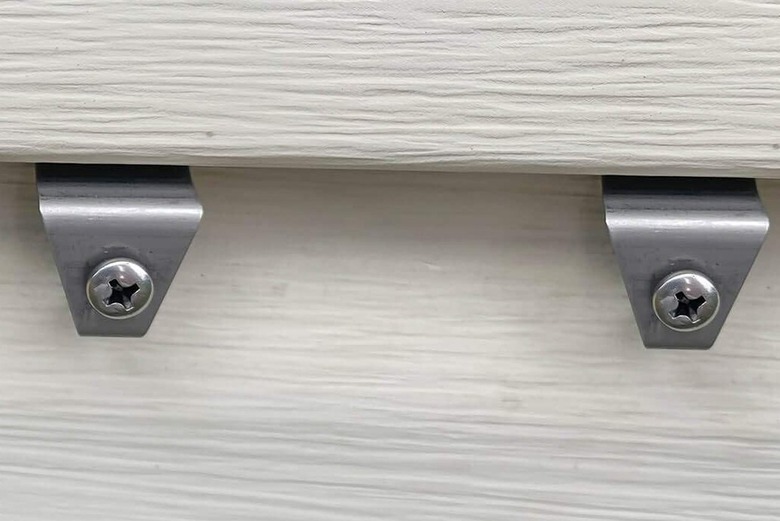How To Drill Through Vinyl Siding
We may receive a commission on purchases made from links.
Vinyl siding is fragile stuff, so if you have to drill a hole through it that's large enough for something like a pipe, you have to be careful. If you approach the task the same way you approach drilling through wood or metal, you're likely to chip or shatter the siding, and you may end up having to replace the panel you tried to drill.
If you need a small hole (less than 1/2 inch in diameter) through which you can drive a screw or hanger to mount a mailbox or hose bracket, you don't have to be quite as careful. It's a good idea, though, to seal any hole you drill in vinyl siding with caulk because you don't want any water to seep behind the siding. If it does and it compromises the sheathing, you have a major problem that may involve taking down the siding and replacing the sheathing.
How to Drill a Small Hole
How to Drill a Small Hole
Before you drill through your vinyl siding, you might want to consider whether it's even necessary. If you need to hang something relatively lightweight, like a mailbox, you may be better off using siding clips. They hook onto the bottom of one of the siding planks and have preinstalled screws to hold whatever it is you need to hang. They don't work well for heavy objects, like planter boxes, which need to be supported by screws sunk into the sheathing or wall studs.
To drill a hole for a screw, choose a drill bit with approximately the same diameter as the screw. Use a wood bit if the substrate behind the siding is wood and a masonry bit if the substrate is brick or concrete. Mark the position of the hole, set the bit on the mark, and operate the drill at a low speed until it penetrates the siding. After that, increase the speed if you need to drill deeper into the substrate.
How to Drill a Large Hole
How to Drill a Large Hole
When you need to drill a hole for a pipe or something with a diameter larger than 1/2 inch, the best drill bit to use is either a Forstner bit or a hole saw, not a spade bit. Choose a bit with a slightly larger diameter than the object you're going to feed through the hole so it can move freely and won't bend the vinyl.
Mark the hole, center the pilot bit of the hole saw or Forstner bit on the mark, and operate the drill in reverse while you apply light pressure to the drill. Because the drill is spinning counterclockwise, the teeth on the hole saw or Forstner bit won't bite into the vinyl and chip it. It may take longer to drill the hole than it would if the drill were spinning clockwise, but you'll end up with a perfect hole with no damage to the vinyl.
Don't Forget to Seal the Hole
Don't Forget to Seal the Hole
Whether you drill a small hole or a large one, it's important to seal it with caulk, and the best caulk has an exterior-grade waterproof formulation containing silicone, polyurethane, or something similar. Apply the caulk from a tube or with a caulk gun to ensure you get a continuous bead with no gaps.
If you drilled small holes for screws, filling the hole with caulk before you drive the screws is the best way to ensure the hole is completely sealed. If you drilled a large hole for a pipe or some other cylindrical object, pass the object through the hole and make all necessary connections so that the object is stable and won't move. Use a tube or caulk gun to run a bead completely around the object. Wait for the caulk to dry and if it shrinks and you see holes, apply more caulk to seal them.
